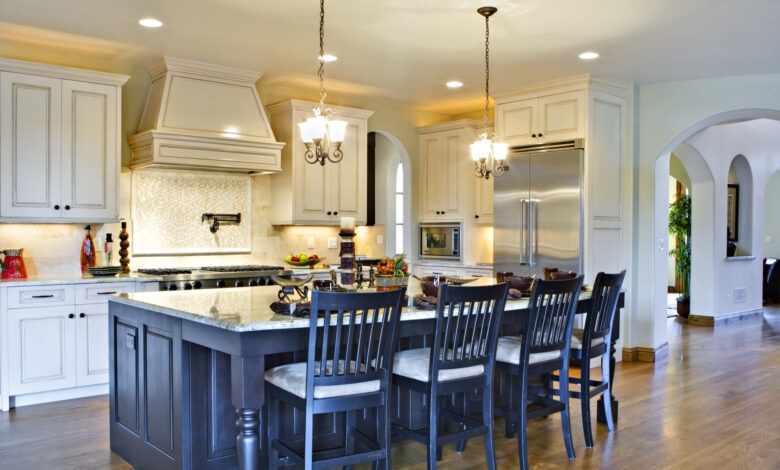7 Considerations For Your Custom Kitchen Design

Creating a custom kitchen is an exciting venture, allowing you to tailor every aspect to your preferences and lifestyle. However, with great customization comes great responsibility! To ensure your dream kitchen becomes a reality, here are seven essential considerations to keep in mind.
Functional Layout:
The foundation of a well-designed kitchen lies in its layout. Consider the classic kitchen work triangle – the efficient positioning of the stove, sink, and refrigerator. This design principle ensures a smooth workflow, making cooking and cleaning a breeze.
Think about how you move around in your kitchen and design the layout to accommodate your daily activities seamlessly.
Storage Solutions:
One common mistake in custom kitchens is underestimating storage needs. Plan for ample storage space by incorporating cabinets, drawers, and pantry areas. Think about clever solutions like pull-out shelves, vertical dividers, and built-in organizers to maximize space efficiency.
Customization allows you to cater to your specific storage needs, ensuring everything has its designated place.
Appliance Selection:
Choosing the right appliances is crucial for both functionality and aesthetics. Consider your cooking habits and select appliances that fit your needs. Whether it’s a professional-grade stove, a smart refrigerator, or a space-saving dishwasher, ensure each appliance aligns with your lifestyle and cooking preferences.
Quality Materials:
Investing in high-quality materials is key to a durable and visually appealing custom kitchen. From countertops to cabinetry, choose materials that can withstand the daily wear and tear of a busy kitchen.
Pay attention to the finishes and colors, ensuring they complement each other for a cohesive look. Quality materials not only enhance the aesthetics but also contribute to the longevity of your kitchen.
Lighting Design:
Proper lighting can transform the ambiance of your kitchen. Consider a combination of ambient, task, and accent lighting to create a well-lit and inviting space. Pendant lights over the kitchen island, under-cabinet lighting for task areas, and recessed lighting for overall illumination are popular choices.
Customizing your lighting design allows you to create a kitchen that is not only functional but also visually stunning.
Personal Touches:
Adding personal touches to your custom kitchen design makes it uniquely yours. Incorporate elements that reflect your personality and style – whether it’s a vibrant backsplash, custom hardware, or open shelving to display your favorite kitchenware.
Customization empowers you to infuse your kitchen with character, turning it into a space that feels like home.
Future Considerations:
Lastly, think about the future when designing your custom kitchen. Consider your long-term plans and potential changes in your family size or lifestyle. Opt for timeless design elements that won’t quickly go out of style.
Additionally, if you live in an area prone to soil instability, like coastal regions, helical piers can be a valuable addition to provide extra support and prevent structural issues in the long run.
Conclusion
Designing a custom kitchen is a journey that requires thoughtful planning and consideration. By focusing on these seven key aspects – functional layout, storage solutions, appliance selection, quality materials, lighting design, personal touches, and future considerations – you can create a kitchen that not only meets your immediate needs but also stands the test of time. Happy designing!




